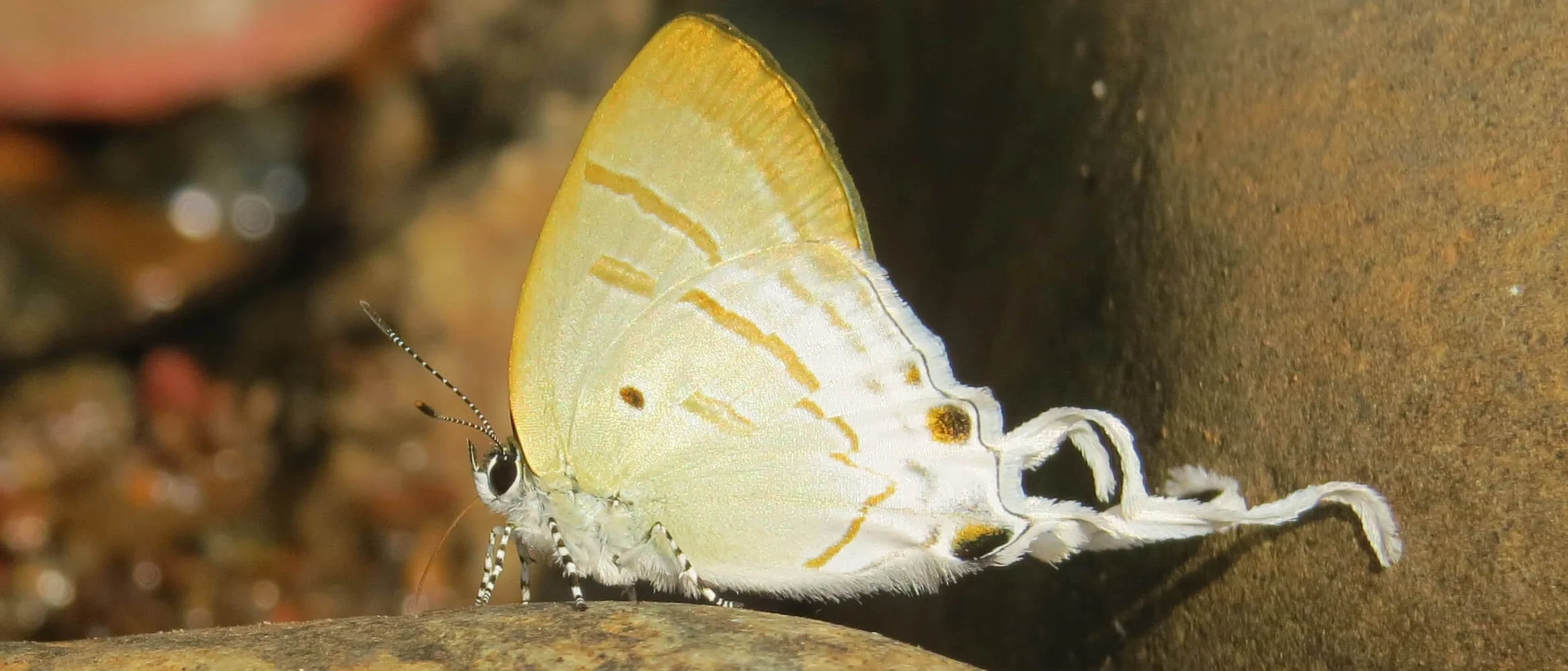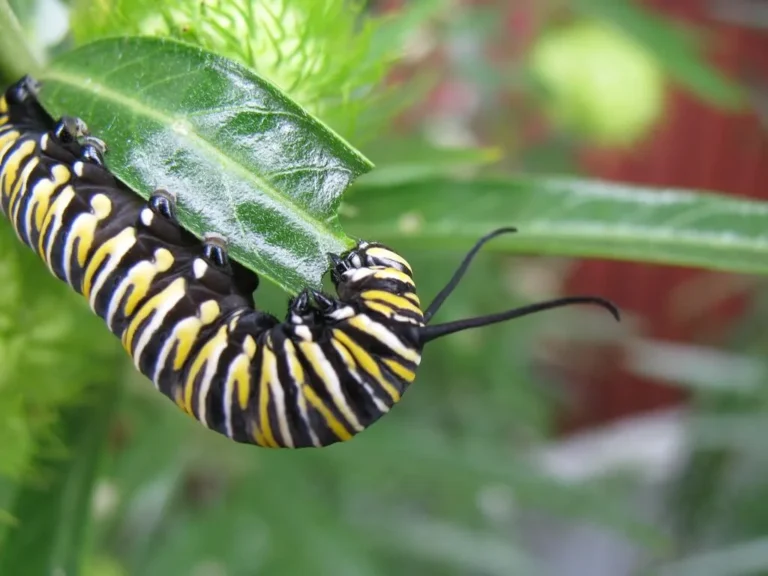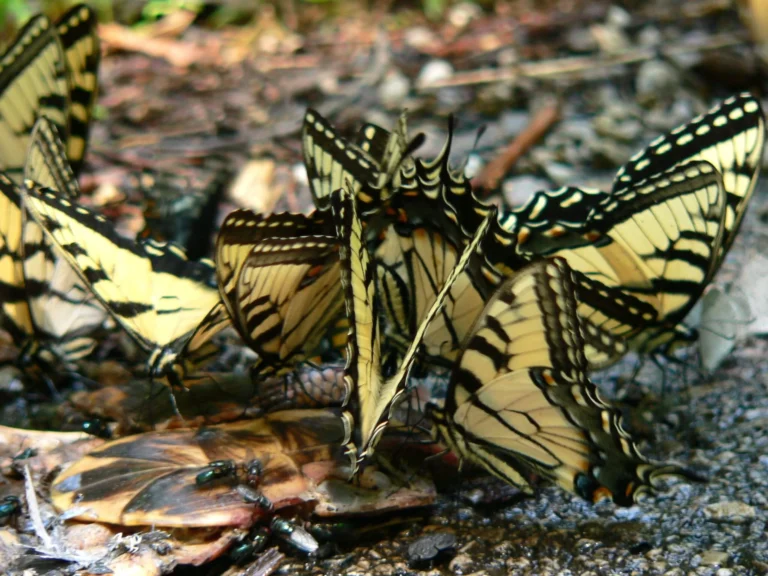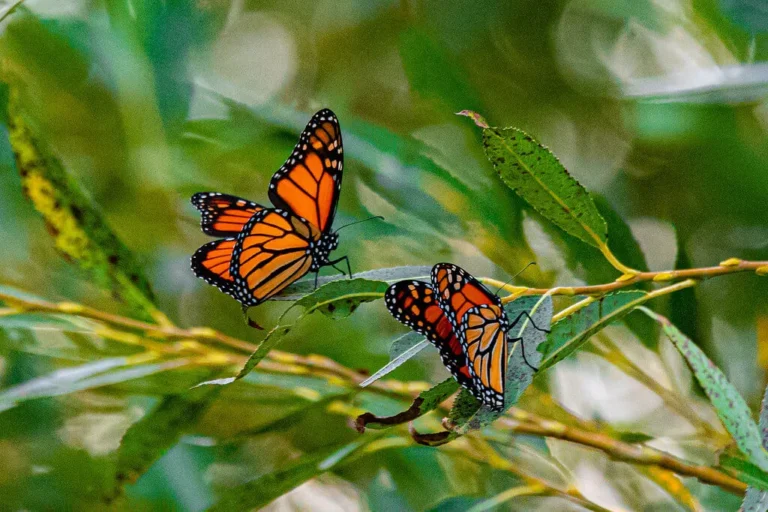Fluffy-tit Butterfly (Zeltus Amasa): An Asian Beauty
The Fluffy-tit Butterfly, known as Zeltus amasa, is notable among Asian butterflies. The male Zeltus has a distinctive blackish forewing, while the female is dark with hints of pale blue. But it’s not just about beauty.
It has an important role in nature. Discover the journey of the Fluffy Butterfly, from egg to adult, as it transforms and takes flight.

Table of Contents
Taxonomy and Classification
When it comes to classifying living things, scientists use a system called taxonomy.
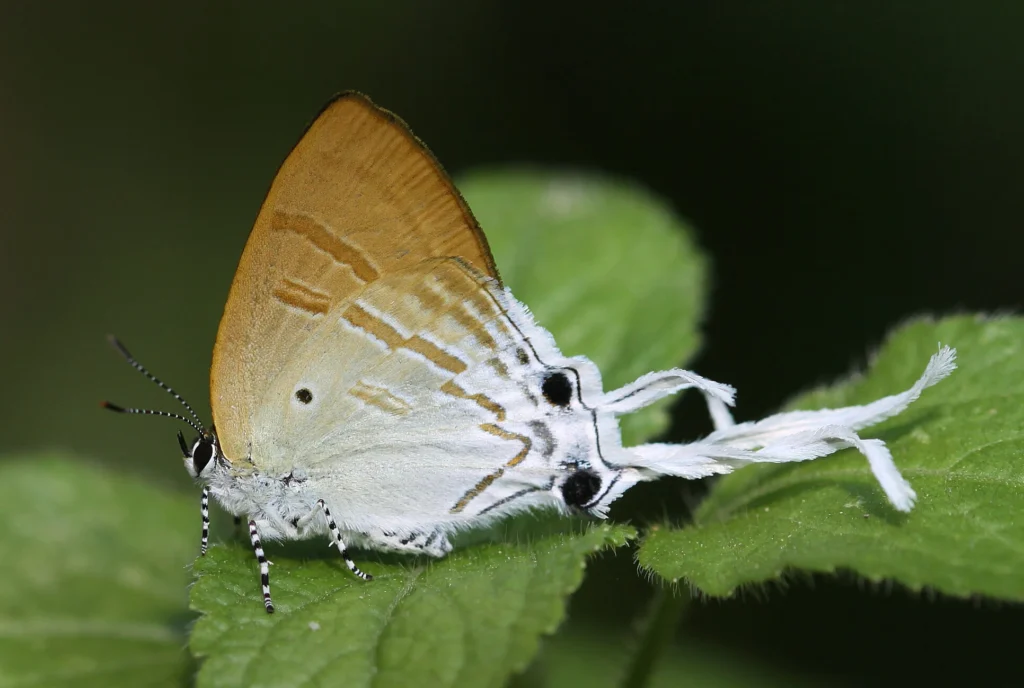
- Kingdom: Animalia – It’s an animal, just like humans and birds.
- Phylum: Arthropoda – This group includes creatures with jointed legs, like spiders and insects.
- Class: Insecta – Being an insect, it has six legs.
- Order: Lepidoptera – This order is for moths and butterflies.
- Family: Lycaenidae – A large family of butterflies, known for their vibrant colors.
- Genus: Zeltus – This is a smaller group within the family.
- Species: Zeltus amasa – This is the Fluffy Butterfly’s specific name.
Each level in this system helps us understand more about where the butterfly fits in the natural world.
Physical Description
When you see the Fluffy Butterfly, a few things stand out:
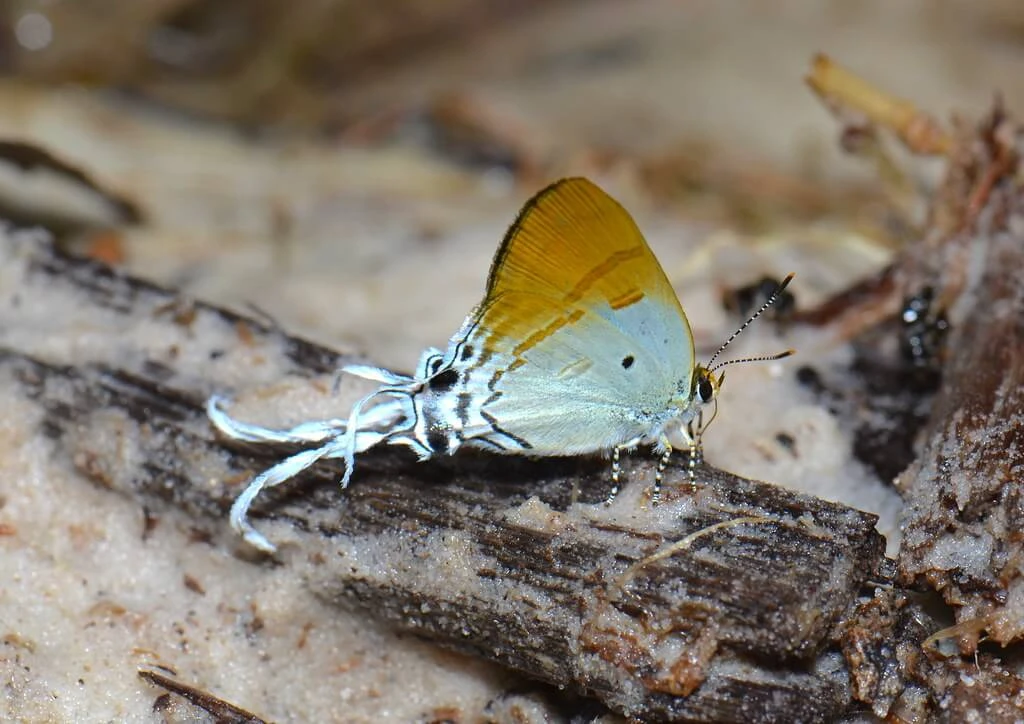
Size and Shape
- Size: This butterfly has a wingspan of 25-35 mm. It’s not too big or too small.
- Shape: Its wings are slightly tapered and round at the tips. This shape helps it fly quickly and smoothly.
Wing Patterns and Colors
- Patterns: The top of its wings has a mix of brown and white spots. These spots create a beautiful mosaic look.
- Colors: Most of the wing is a soft blue. The edges have deeper blue and black shades.
Special Features
- Tails: Look closely, and you’ll see small tail-like bits on its back wings. These tails trick predators into attacking the wrong part.
- Eyes: The butterfly’s big eyes help it see danger quickly. This keeps it safe from threats.
Every part of this Butterfly has a job. Some parts help it survive, while others make it look attractive.
Related Read:
Colorful & Pretty MothsMale vs. Female Zeltus Amasa Comparison
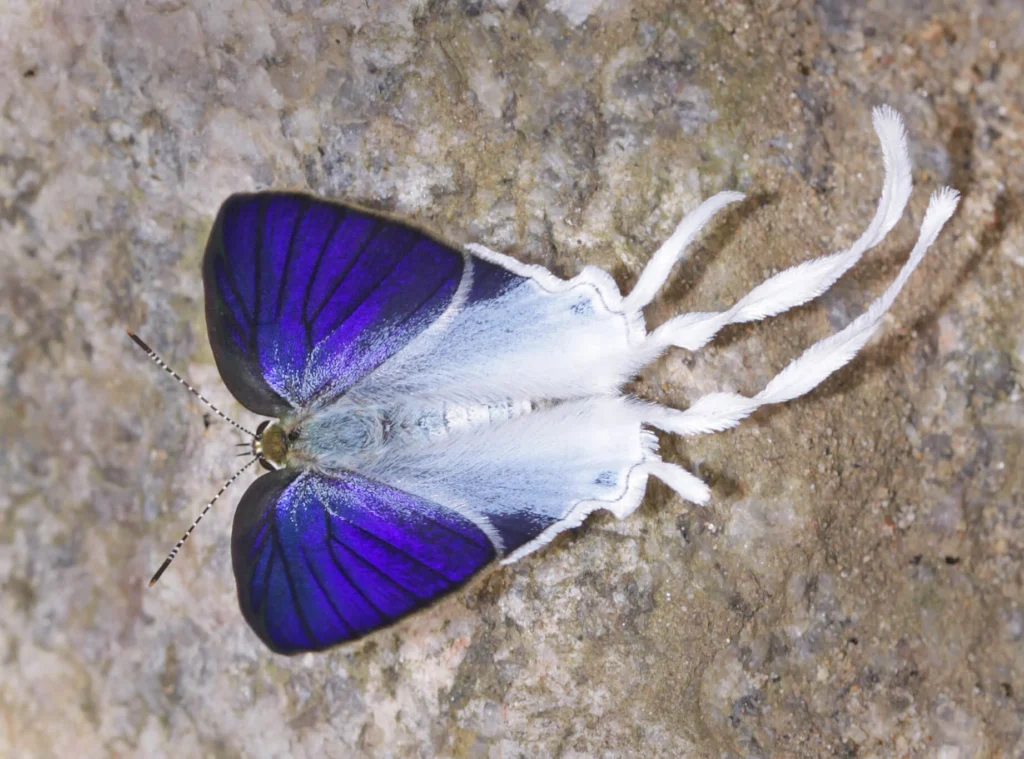
Male
Upperside:
- The forewing of the male Zeltus is blackish with a mix of greyish-blue especially in the basal area color.
- The hindwing is mostly greyish-blue, turning white near the anal angle and abdominal fold. It has white tails with a pale blue line down the middle. Blackish spots sit near the tails.
Underside:
- The main color is pale rufous-brown, but the color of male Zeltus stands out with the bluish-white on the hind marginal area.
- The wings have dark markings, which become more noticeable if the butterfly is attacked and starts flying.
- The antennae are black with white rings. The eyes, legs, and antennae contrast with the top side of the body, which is black with blue hairs, and the bottom side is white.
Female
Upperside:
- The forewing color of the female is predominantly brown.
- The hindwing has a light edge called the costa. The rest of the wing, or the color of female Zeltus, is brown but becomes white near the anal angle. There are black spots above the tail and at the anal angle with a brown spot in between.
Underside:
- The underside is lighter than the male’s. It has similar but softer markings.
Compared to the male, the female Zeltus is dark with a lighter underside. It has similar but softer markings.
Habitat and Distribution
Let’s explore its home and where it lives:
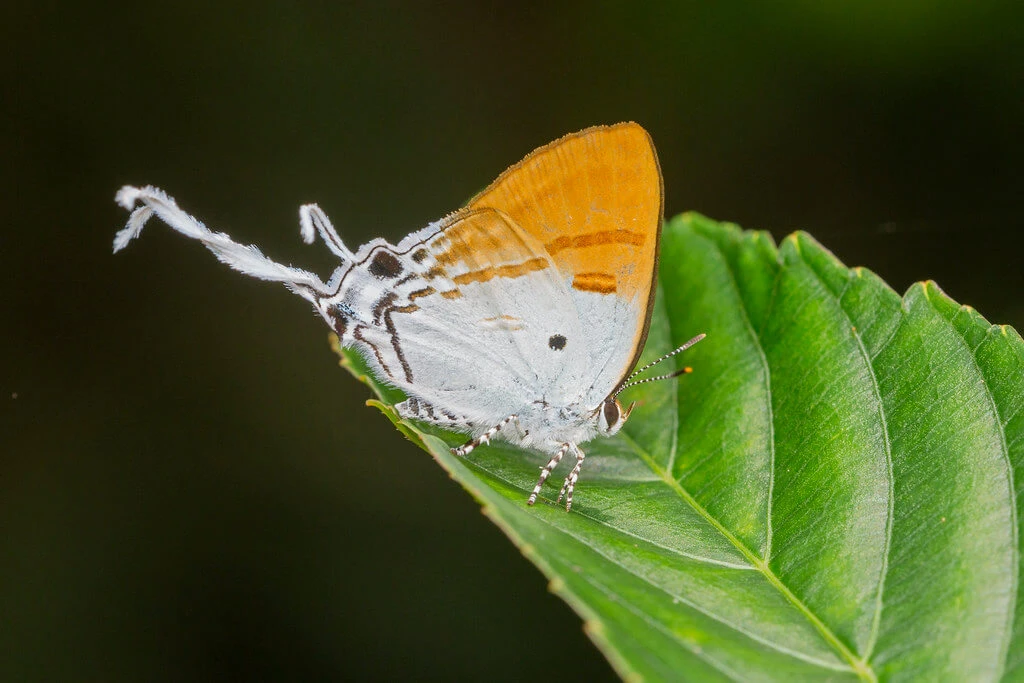
Regions
Asia: The Fluffy-tit Butterfly mainly lives in parts of Asia. Countries like India, Thailand, and Malaysia often report sightings of this beautiful creature.
Specific Habitats
Forests: These butterflies love dense forests where they can find plenty of food and hide from predators.
Grasslands: Sometimes, they also visit grassy areas, especially if there are flowers around.
Altitudinal Range
Mountain Areas: The Fluffy Butterfly doesn’t just stick to lowlands. It flies around in mountain regions, up to altitudes of about 1000 meters.
Life Cycle Of Fluffy-tit Butterfly
Every butterfly, including this delicate flier of Asia, goes through fascinating changes in its lifetime. Here’s a closer look at its journey:
Egg
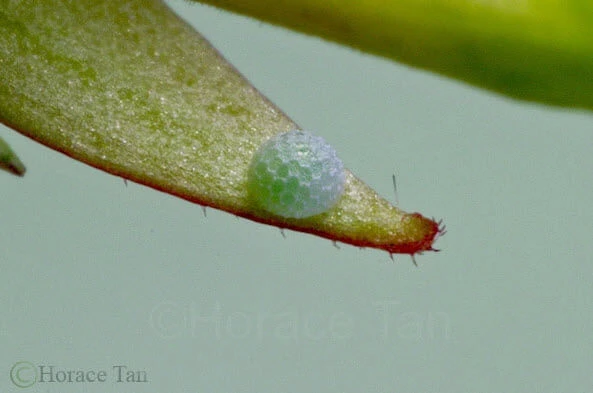
- Appearance: The egg is tiny, pale yellow, and has a smooth surface.
- Size: It’s about the size of a pinhead.
- Where They Lay: Female butterflies often choose specific plants to lay their eggs. These plants will later serve as food for the caterpillar.
Caterpillar (Larva)
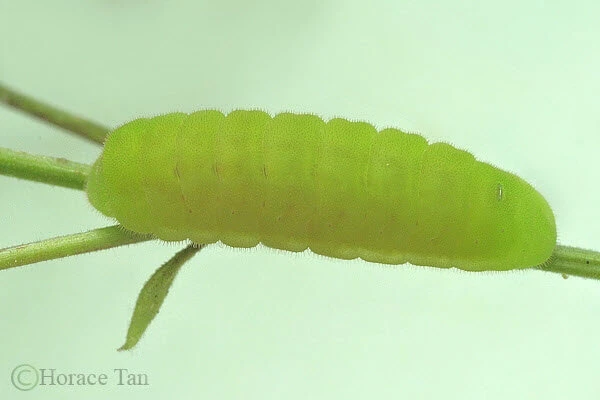
- Appearance: When it first hatches, the caterpillar is green with fine white hairs. As it grows, it becomes chunkier and might show some stripes.
- Size: It starts tiny but grows quickly, munching on leaves.
- What They Do: Caterpillars eat a lot! They need to grow fast and store energy for the next stage.
Pupa (Chrysalis)
- Appearance: The chrysalis is green or brown, helping it blend in with leaves or twigs.
- Size: About the size of a small bean.
- Hanging Out: The caterpillar finds a safe spot, hangs upside down, and transforms into this resting stage.
Adult (Imago)
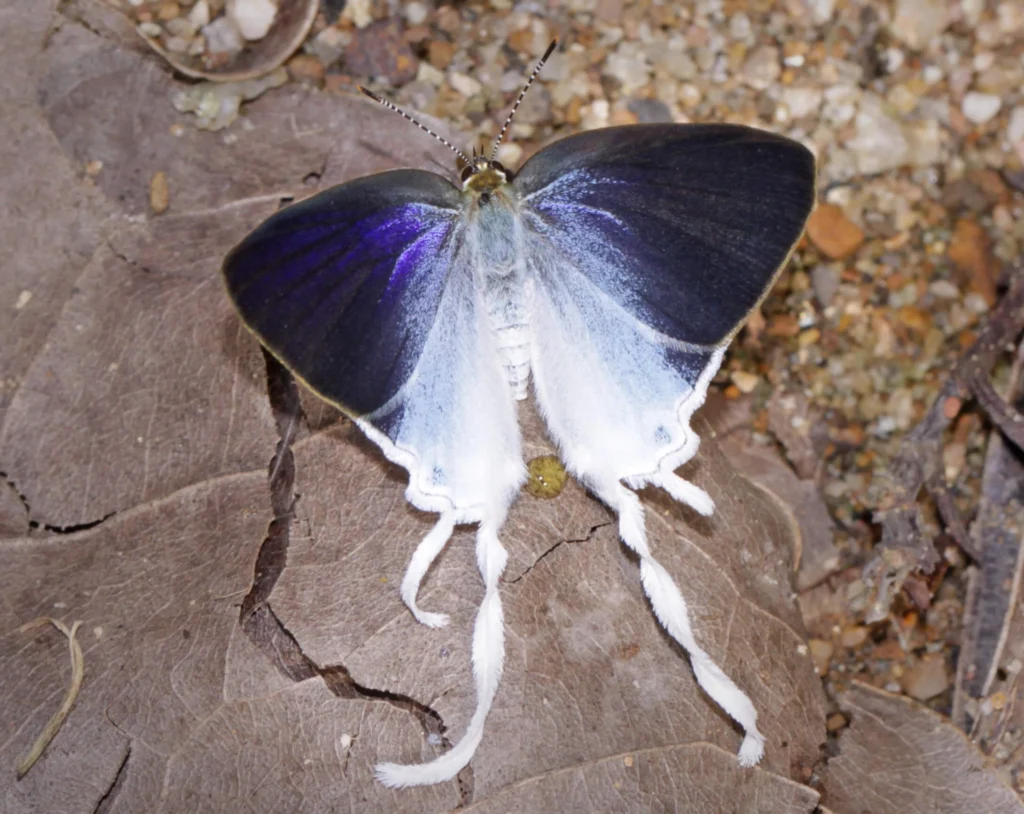
- Appearance: This is the stage we all recognize! The adult butterfly, especially the female Zeltus, has a pale blue wing color complemented with brown and white spots. Interestingly, Zeltus Amasa has false eyes on its legs, which closely resemble and divert attention, acting as a deceptive mechanism against predators.
- Size: With a wingspan ranging from 28 to 32 millimeters, it’s perfectly sized for nimble flights and exploration.
- New Life: The adult butterfly looks for food, a mate, and places to lay its eggs. The cycle starts again!
From a tiny egg to a stunning butterfly, the Fluffy-tit’s journey is a natural wonder.
Diet and Feeding Habits
Let’s dive into its diet:

Larva (Caterpillar):
- Leaf Muncher: The young caterpillar’s main diet is leaves. The female butterfly lays its eggs on specific plants. When the caterpillar hatches, it starts feasting on these leaves.
- Growth Food: Eating leaves helps the caterpillar grow quickly. In a short time, it can increase its weight many times over!
Adult (Butterfly):
- Nectar Lover: The adult Fluffy-tit Butterfly loves nectar. It flits from flower to flower, sipping on this sweet liquid. This nectar gives it the energy it needs to fly and reproduce.
- Fruit Juices: Sometimes, they also drink the juice from ripe fruits. This provides them with extra nutrients.
- Water: Butterflies need water too! They often land on wet patches or puddles to drink.
The Fluffy-tit Butterfly’s diet keeps it healthy and energetic, ready to face the challenges of its environment.
Cultural and Symbolic Significance
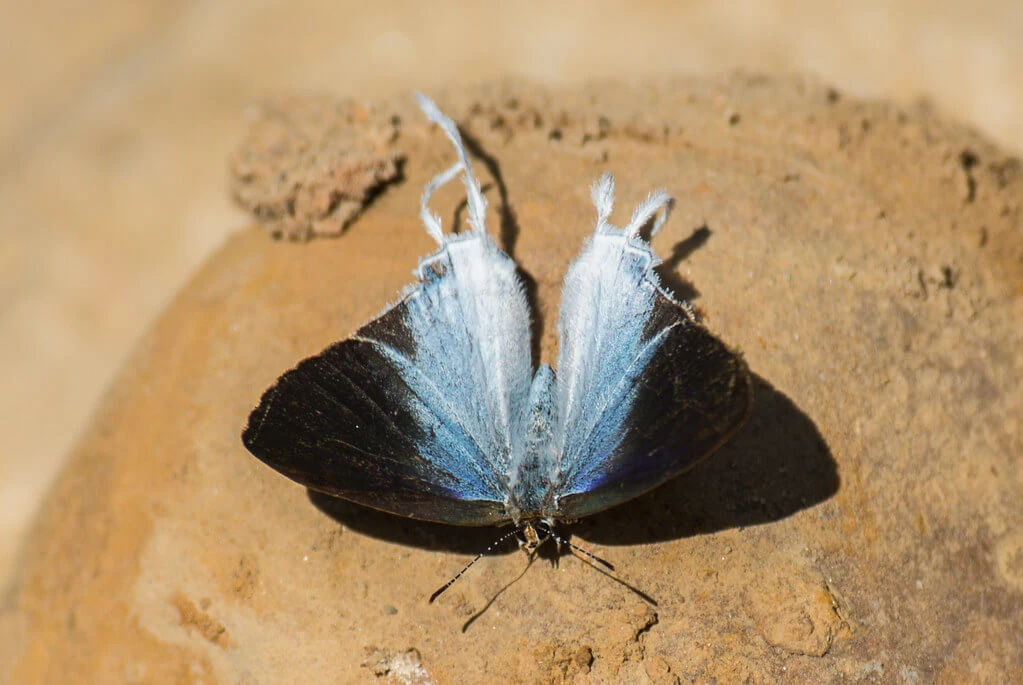
Butterflies have always fascinated humans. They’re not just beautiful creatures; they often hold special meanings in different cultures. Let’s see what the Fluffy-tit Butterfly represents:
Cultural Associations:
- Symbols of Change: In many cultures, butterflies symbolize transformation. Their life cycle, from a caterpillar to a stunning butterfly, mirrors personal growth and change.
- Asia considers the Fluffy-tit Butterfly a symbol of grace and lightness. This is due to its delicate and vibrant appearance.
Folklore and Stories:
- Nature Spirits: Some local tales speak of butterflies as spirits of nature. People see them as messengers or even as souls revisiting the Earth.
- Seeing a Fluffy-tit Butterfly can bring good luck or indicate a positive change in some communities.
Modern Interpretations:
- Environmental Indicators: Today, many see butterflies, including the Fluffy-tit, as indicators of a healthy environment. Their presence often indicates a balanced and thriving ecosystem.
Many people love the Fluffy-tit Butterfly for its beauty and grace, as it symbolizes positive qualities.
Final Thoughts
The journey into the world of the Fluffy-tit Butterfly has been nothing short of fascinating. This butterfly, with its vibrant colors and patterns, offers a glimpse into the wonders of nature.
Its life cycle, from a tiny egg to a graceful adult, teaches us about nature’s incredible design. And its place in folklore and culture shows how deeply it touches human hearts.
When we watch a Fluffy-tit Butterfly move between flowers, it reminds us of the beauty of nature.
Let’s cherish and celebrate these moments, ensuring that the stories of the Fluffy-tit Butterfly continue to inspire.
References and Further Reading
For those eager to explore the wonders of butterflies in general, here are some recommended reads and resources:
Books:
- “The Butterflies of Asia” by L. Davidson – A comprehensive guide to Asian butterflies, their habitats, and behaviors.
- “Metamorphosis: The Science of Change” by P. Rogers – An in-depth look at the transformation process in insects.
Online Resources:
- The Butterfly Conservation Society – An organization dedicated to preserving butterfly species and their habitats.
Documentary
- “Wings of Change” – A documentary exploring the life cycles, migration patterns, and survival tactics of various butterfly species.
Using these resources will improve your understanding and love for the complex and stunning world of butterflies.


